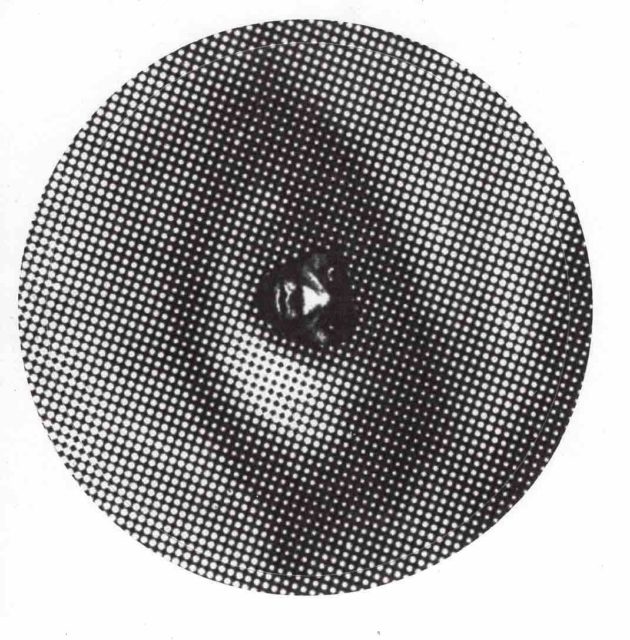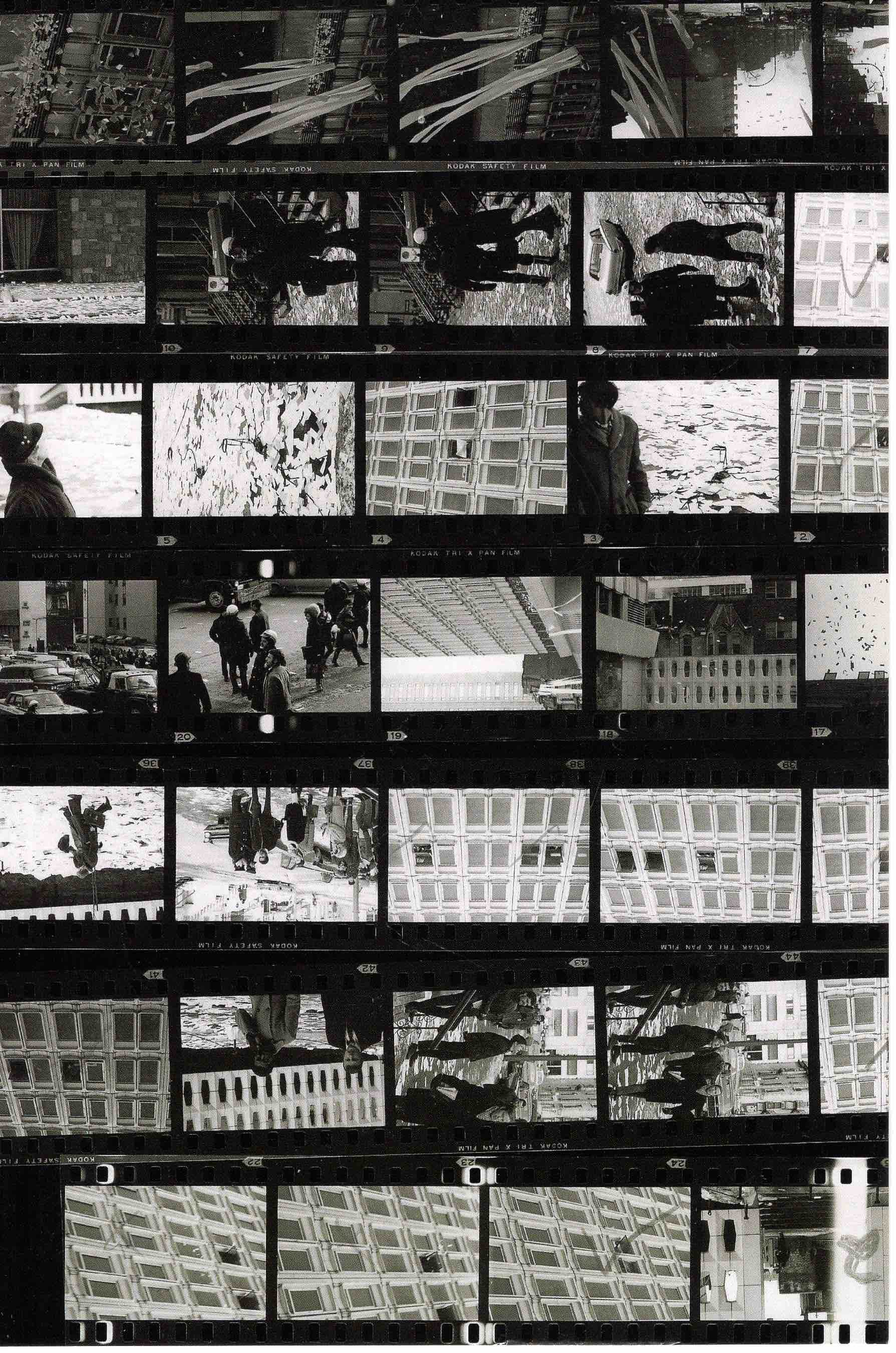In the fall of 2015, I went to see The Ninth Floor with a friend, a National Film Board documentary about the Sir George Williams Affair. She suggested the film, so I went into it without any knowledge of what we were going to see.
We watched it in DeSève Cinema in the JW McConnell Building at Concordia. Beforehand, I remember waiting for Alex on the corner of Maisonneuve and Mackay. I remember it was a sunny day, and the September sun made the white concrete Hall Building shine.
The film was shocking: I was shocked by the scenes of computer punch cards floating out, smoke billowing out of the Hall Building’s windows, and I was shocked by my own ignorance of a crucial moment in such a familiar building’s history.
In retrospect, it isn’t surprising that I didn’t know about it then. The Sir George Williams Affair is not taught in schools. It is barely talked about now; even today, fifty years after the occupation of the ninth floor of the Hall Building. When I bring this up with friends who have also grown up here, I’m met with shock and curiosity.
But still, I felt like I should have known.
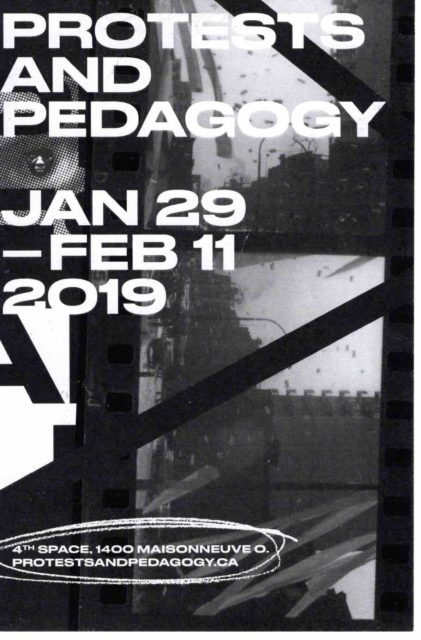
WHAT HAPPENED?
On April 28, 1968, six students – Kennedy Fredericks, Allan Brown, Wendell K. Goodin, Douglas Mossop, Terrence Ballantyne, and Rodney John – at Sir George Williams University lodged a complaint with the Dean of Students. Today, Sir George Williams University is known as Concordia University: the institution was renamed after a merger with Loyola in 1974. In the complaint, the students stated that biology professor Perry Anderson was repeatedly giving Black students disproportionately low grades, sometimes lower than their white peers for the exact same labs. They mounted a case against Anderson to prove that he was treating Black students in a discriminatory manner. The Dean of Students met with the students in May. Anderson denied these charges and no action was taken.
Ostensibly, university administrators hoped that the students would lose interest over the summer. The students, knowing they had a strong case, increased pressure on the administration when they returned in the fall. The administration, however, played dirty, according to students. The students met with the Dean of the Biology department. To counter the students’ claims that Anderson had repeatedly missed class unannounced, and without logging it, the Dean presented notes from white students that were supposed to prove that Anderson was in fact present on those dates. Those documents were dated as having been on Tuesdays and Thursdays, despite the fact that classes were on Mondays, Wednesdays, and Fridays. When the students pointed out the error, the Dean dismissed their claim and moved on. Later in the semester, rumours spread that the Black students were threatening violence. The students, having suggested nothing to the effect, discovered that the rumour was started by Vice Principal O’Brien. In a letter to Anderson, O’Brien wrote that there was a “probability of violence.” When the students confronted O’Brien and asked him to apologize for having spread such an incendiary falsehood, he claimed the students had kidnapped him. As a result, three students faced criminal charges. In December, the administration, Anderson, and the students decided on a committee that all parties agreed on. However, in January, a number of professors on the committee resigned. Students demanded a new committee be formed, but the administration went ahead with the hearing anyway.
On Wednesday, January 29, 1969, the hearing regarding the charges of Anderson’s racism began. The hearing committee had not been agreed upon by the students; no one on the committee represented the interests of the students. Deeming the hearing committee a sham, student organizers led 200 students up to the ninth floor of the Henry F. Hall Building where the university computers were housed. Rodney John said that this idea stemmed from the minutes of a meeting between administrators, wherein they said that the computer centre had to be guarded from student occupation due to the value of the goods within (see page 7). LeRoi Butcher, a participant in the occupation, described this action as “an effort to bargain from a position of strength.”
The demands of the students were the following:
“A public rejection of the hearing committee
A meeting between all parties to lay the ground rules for a new, reconstituted committee
An atmosphere free from all threats of reprisal and punitive action
Due consideration for the academic status of blacks who have lost study time organizing the protest
A dismissal of the civil and criminal charges facing three Black students”
Students occupied the “liberated data centre” for nearly two weeks. Between 200 and 400 people are estimated to have occupied the space for the majority of 13 days. Sir George students, of course, participated, as did students and activists from around the city. The occupation was led by Black students, but many of the occupiers were not Black, and joined in solidarity. The occupation is often overlooked in discussions of the Affair, in part because “you just had to be there,” in the words of Rodney John.
Participants described the occupied ninth floor as orderly and lively. Meetings were held daily at a set time in order to collectively make decisions regarding the space itself, as well as future action. Michelle Serano, a student protestor involved in the occupation, said that it was “incredibly exciting and stimulating at times. Other times, it was very boring.” Occupiers would come and go. Some stayed the night while others went home. Some students would leave the ninth floor to attend their classes.
On February 10, an agreement was about to be reached wherein University authorities would recognize the demands of the student occupiers. Later that evening, the Faculty Association vetoed the agreement. Many students occupying the computer centre, who were under the impression that the occupation was about to end, began to leave. Others stayed to clean up.
Up until February 11, the ninth floor had been kept clean and the computers had remained untouched. Student occupiers guarded the door to the computer lab itself, promising to only go into the lab if the police were called: they hoped the police would be less likely to beat them in a room full of expensive equipment. As described in the testimony of student participants, students viewed the occupation of the computer centre as leverage and as a potential guarantor of their safety, but ultimately wanted to protest peacefully and to return to their classes.
After negotiations broke down, Chet Davis, a Black professor at Sir George Williams, pleaded with acting Principal D.B. Clarke to allow the students to leave peacefully. Despite Davis’ attempts, and despite the fact that students had threatened to destroy the computers if the police were called, Clarke decided to call in the police.
On February 11, the local police arrived around 4:10 am. At this time, the police had no specific orders to arrest students, so they did not force their way further into the centre. They left shortly thereafter.
The students now knew that the police had been called, and they expected the riot squad to follow. Occupiers barricaded both entrances to the centre. They moved into the computer room and began to throw various objects out of the windows of the Hall Building. Most notably, computer punch cards were thrown out the window. By 9 am, the punch cards littered Mackay street.
Not long thereafter, a fire broke out. Legally speaking, the cause of the fire remains unknown. At the time, most reports blamed the students. These reports seem to ignore how absolutely suicidal setting a fire in a barricaded space would be. Those who were on the ninth floor alledge that the police set the fire in order to, as one student wrote, “smoke them out.”
Students on the ninth floor were only able to escape the smoke by axing down a back door, but they escaped only to be embraced by the batons and blows of the police.
Black students were especially targeted. Police punched, kicked, and hosed the students; they burned them with cigarettes and beat them with riot clubs. Students were forced to stand with their hands on a wall for three hours. They were not allowed to move. If they did, they would be struck on the back with a baton.
While this was happening, protesters in support and in opposition to the occupation gathered on Maisonneuve, Mackay, and Bishop. Seeing the smoke coming out of the Hall building, counter-protesters shouted horrific, vitriolic chants, including “let the n***** burn.”
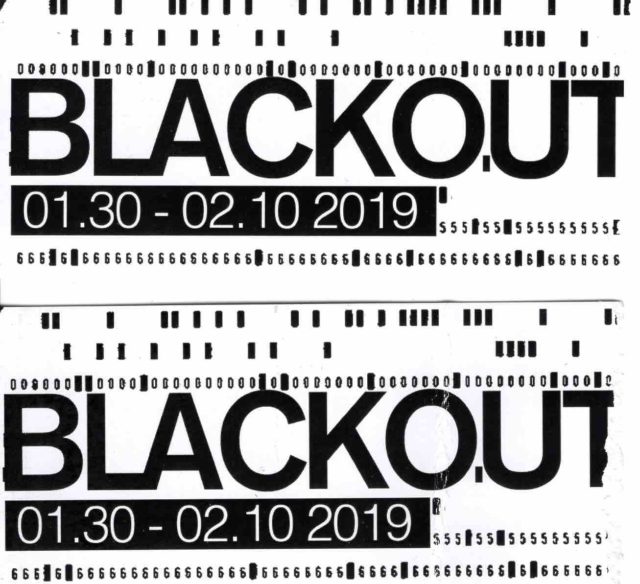
Ninety-seven students were arrested. Forty-two were Black. Thirty-five were women. Forty-four were Canadian, while 46 were foreign nationals. Those arrested were denied bail. They remained in jail for two weeks. Rosie Douglas, Anne Cools, and Brenda Dash, all participants in the occupation, served extended prison sentences. Some students were deported. Douglas, as well as many others, believes that Coralee Hutchison lost her life as a result of police battery: she received a blow to the head from a police baton on February 11. She later died due to a blood clot in her brain.
The occupation of the computer centre was the largest student occupation in Canadian history. It resulted in two million dollars worth of damages, more than any other act of civil disobedience in Canada. At least half of the damages were a consequence of the fire. This emphasis on numbers, however, effaces the impact that the Affair had on the lives of individuals. Being arrested, assaulted by the police, spending weeks in jail, getting deported: all of these consequences drastically altered the lives of those involved. Their lives are far more important than damages to physical property.
HOW THE AFFAIR HAS BEEN REMEMBERED
In short, it hasn’t. The Affair has by and large been forgotten. People just don’t know about it. If people do know, they are informed by how the Affair has been told by the media and by those who do remember it. Reports from 1969 immediately sided with the police and administration, demonizing student occupiers as “violent.” Property was valued more than lives, and reports played on preconceived notions tying Blackness to violence.
Little has changed. In a recent article in the Toronto Star, Sidhartha Banerjee writes that “the university called in police to quell the riot on Feb. 11.” What riot does he speak of? Students peacefully occupying the ninth floor for nearly two weeks? Students throwing punch cards from the windows after Clarke called the police on them? Banerjee simultaneously overstates the violence (if damaging physical property can even be called that) of the students and neglects any mention of police brutality. He thus perpetuates the framing of students as violent and police as “keeping the peace,” despite the fact that all testimony would suggest the opposite.
In his seminal text Discourse on Colonialism, Aimé Césaire writes that colonial projects employ a “forgetting machine.” Maintaining power requires maintaining a certain narrative. Nearly every Montrealer I have mentioned this to had no knowledge of these events, or had only found out about it recently. No matter how we find out, we are shocked that we did not know. By demonizing students, the narrative ostracized students and made them pariahs. As a result, participants were silenced and the history of the Affair has been nearly erased.
But the history hasn’t been completely erased. Throughout the 50th anniversary of the occupation, a series of events called Protests and Pedagogy took place. A permanent exhibition based on archival photographs from the Affair was housed in the Fourth Space in the JW McConnell Building. These events, the space the central exhibition takes up, the play Blackout – they all contribute to a reinsertion of the Sir George Williams Affair into our collective memories.
Protests and Pedagogy’s exhibition displays previously hidden photos of the occupation; they are projected on screens around the room. At night, the projection reflects onto the windows which face the Hall Building. These windows become a double exposure of past and present. Printouts of The Georgian, one of Sir George William’s student newspapers, tell the story in their own complicated way. TV screens play clips from the meeting on January 29, 1969. The use of archives brings stunning photos out from the shadows. The black floors, the white surfaces, the museum-like stillness, however, felt a bit antithetical to the protests themselves: the sterility of the space puts the events staunchly in the past and is at odds with the dynamism of the occupation itself. Still, it is a space that makes room for memories of the Affair to be unearthed.
Conversations in the space bring it back to life. Many of those who were involved came to speak for various events. With such a lack of information on the protests, their testimony was illuminating. The predominant narrative surrounding the Affair denies the protesters agency, and this space gave them room to share their experiences.
One of the events in the Protests and Pedagogy series was a walkthrough of the ninth floor, led by Rodney John, Philippe Fils-Aimé, and Michelle Serano. Post-fire renovations have drastically altered the ninth floor, making it difficult to imagine the spatiality of the occupation. Nevertheless, the physicality of the space, the way that it seemed to bring back memories for the speakers themselves, gave the occupation and the events of February 11 a certain vivacity.
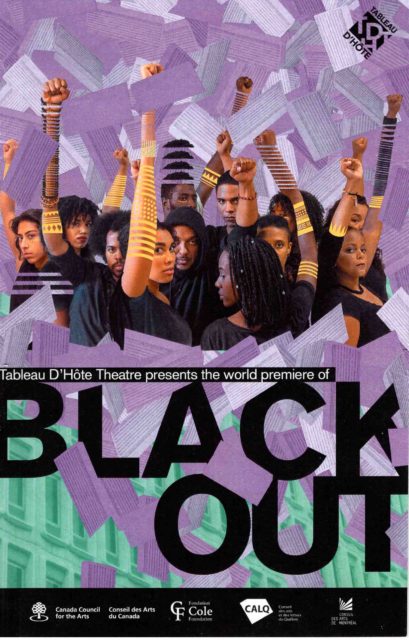
Blackout, a play presented by Tableau D’Hôte Theatre and developed in collaboration with Playwrights’ Workshop Montreal, engages with these events in a completely different way. By fictionalizing the Affair, the play is able to step into the world of Sir George Williams in 1969. The modern adaptation, filled with contemporary references that varied from pop culture to Black Lives Matter chants, merged the events of the past with the ongoing struggles of the present. The all-Black cast emphasized this and allowed actors to eerily denaturalize white racism; Black actors act out and speak the racism of white characters, making the audience hyper-aware of the racism portrayed. The largely feminized cast also shifted 1960s Black Power movements, including the Sir George Williams Affair, away from their masculine mythology. Photos of Black Power in the 1960s, including photos of the Affair, mainly feature male participants; in contrast, the play’s feminized cast emphasized the role of women in the movement, even if they were not seen. By performing and fictionalizing the events ten floors below the site of the events themselves, in a theatre named after the acting principal during the events, D.B. Clarke, Blackout brought the Affair into the present.
On the whole, this event series helps us remember what has been forgotten: that the Sir George Williams Affair happened, and it happened in ways very different from how it has been told by mainstream media. While commemoration can be limited in its political implications, remembering ultimately counters the idea of the “forgetting machine.”
WHY REMEMBER?
We must remember the Sir George Williams Affair for those who lived through it, who felt the consequences of their action, and for Coralee Hutchison, whose death was likely linked to police violence. We must remember the events to oppose Césaire’s “forgetting machine.” We must also remember the Affair to inform our own practice. University administrations – bureaucratic institutions of all kind – are resistant to change. We look at 1969 to understand the workings of the institution and to understand how action was met with brutal repression. Of course, this is not to say that the Affair should or could be repeated; it is to say that change comes from action, and it most effectively comes from action that has learnt from the past.
THE PAST AND PRESENT MERGE INTO ONE
The Concordia archives are tucked away on the West side of the tenth floor of the Hall Building, directly above where the computer centre was. I visited the archives last semester to do research on the “computer centre riots,” as the events are formally known there. Between stacks, I looked up at the windows, bolted shut since February 11, 1969. As I flipped through photos, I thought about them in relation to where I was sitting.
It was snowing when I left the Hall building, but given that it was late November, there was only a dusting. I walked out, onto the same street I had just seen covered by crowds, covered with so many computer punch cards that it looked like snow. For a brief moment, the past and the present seemed to merge into one.
